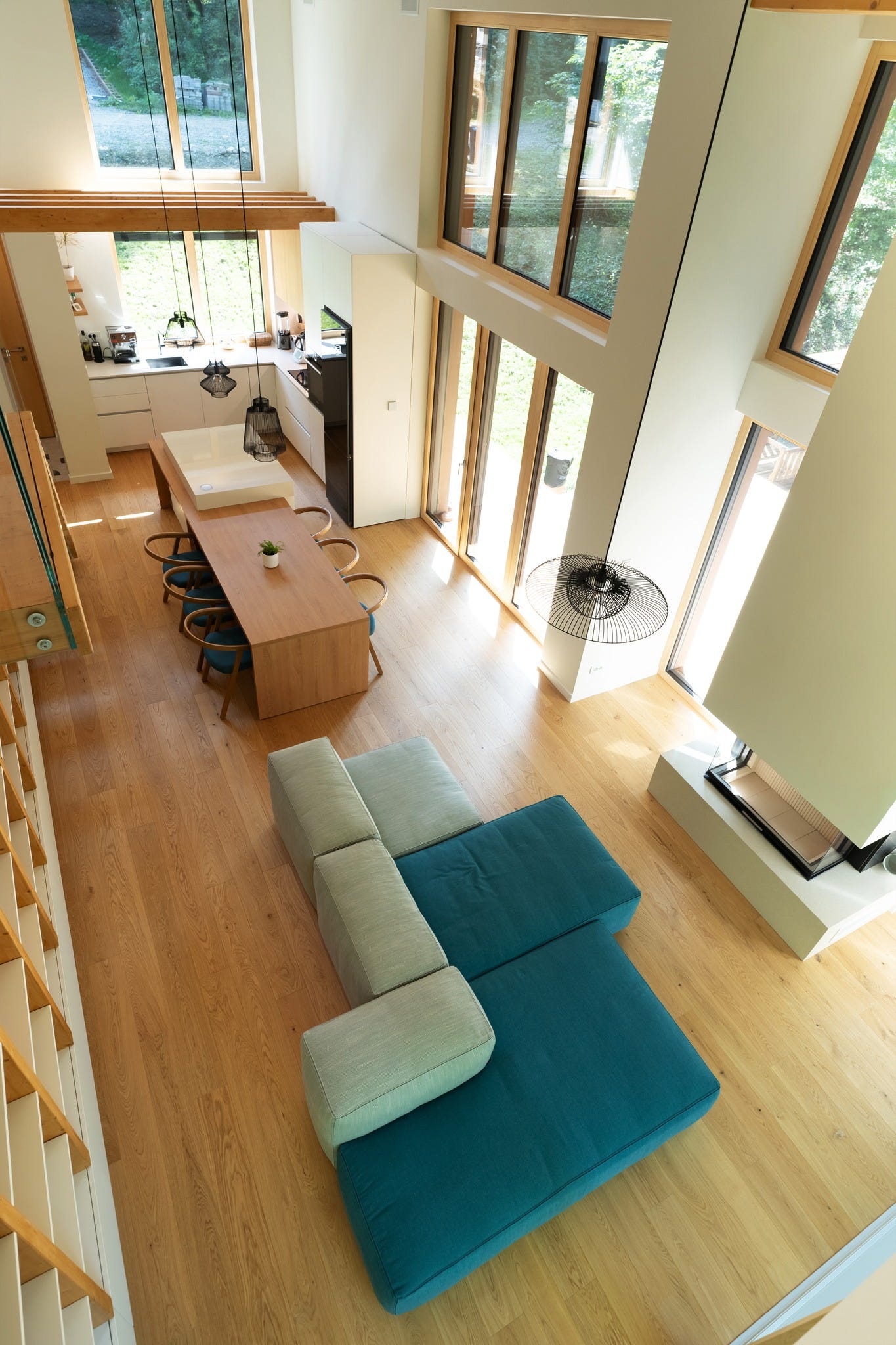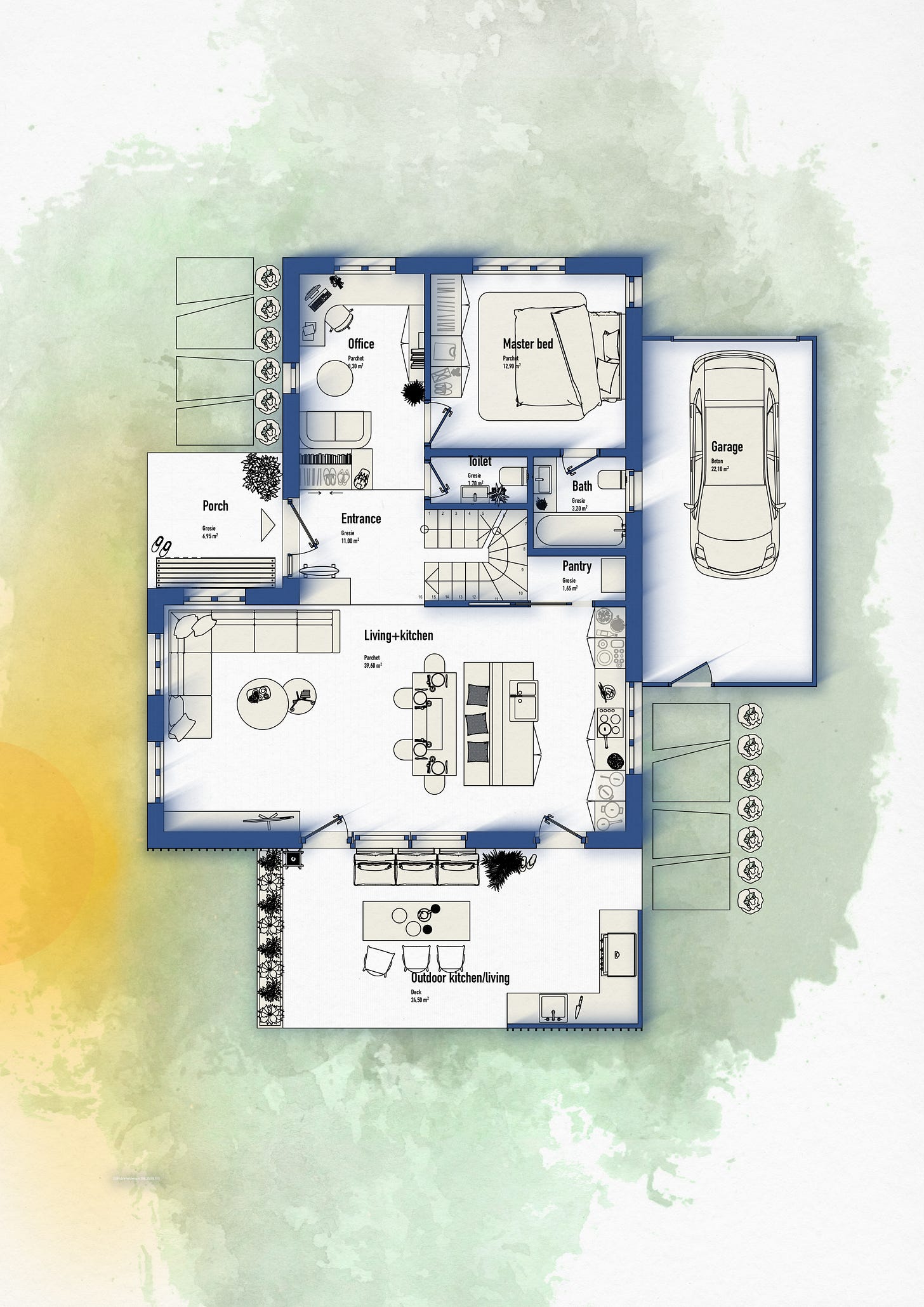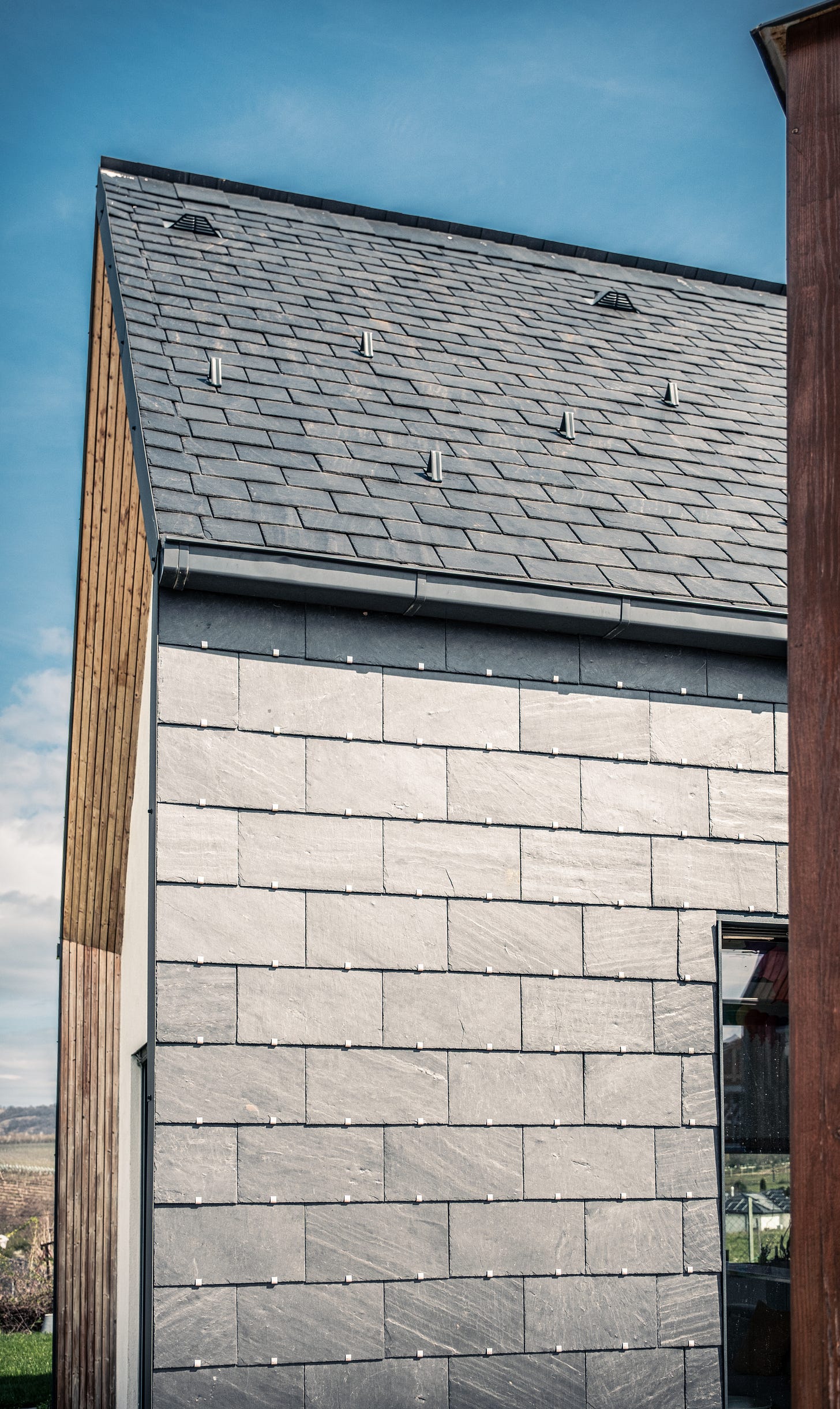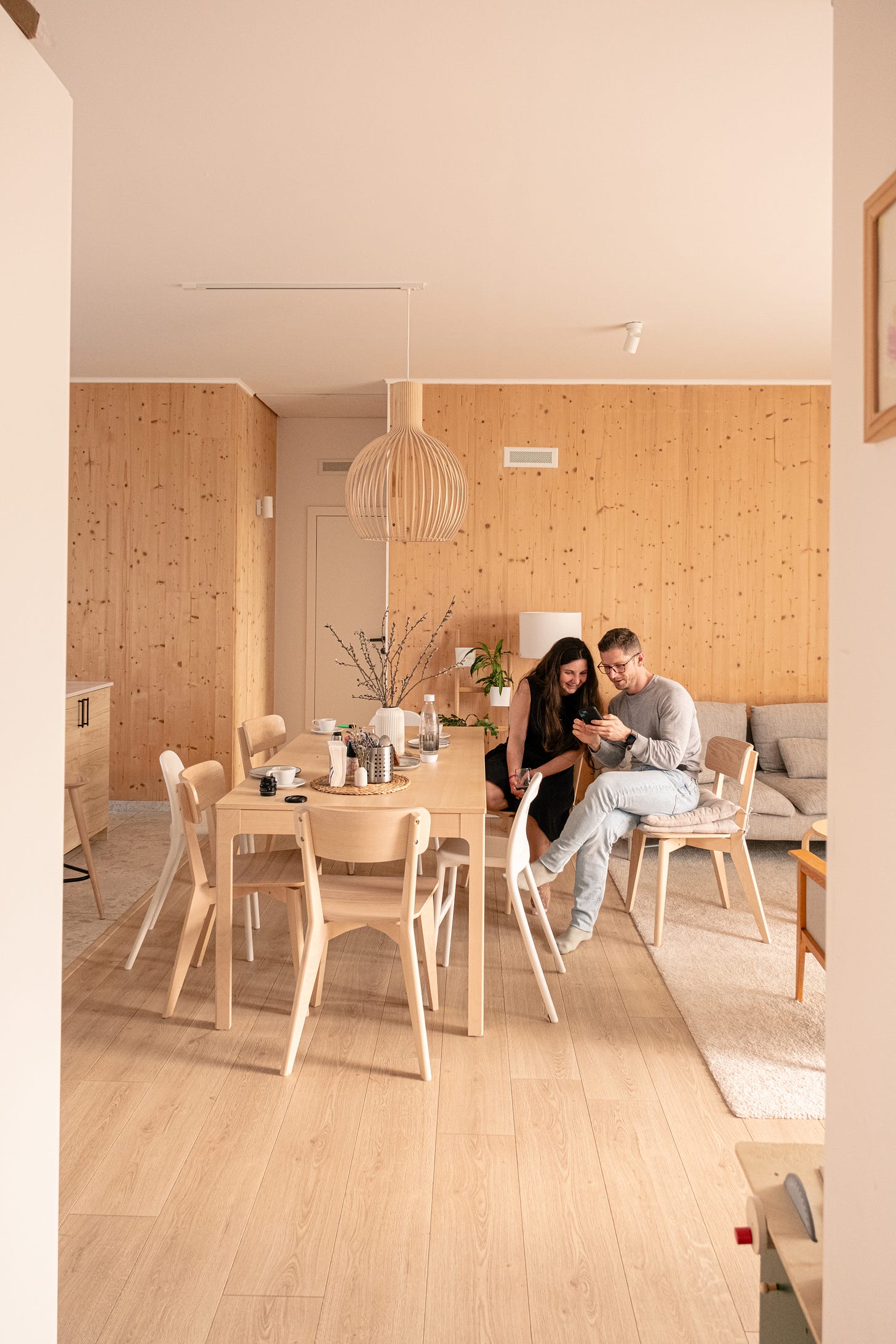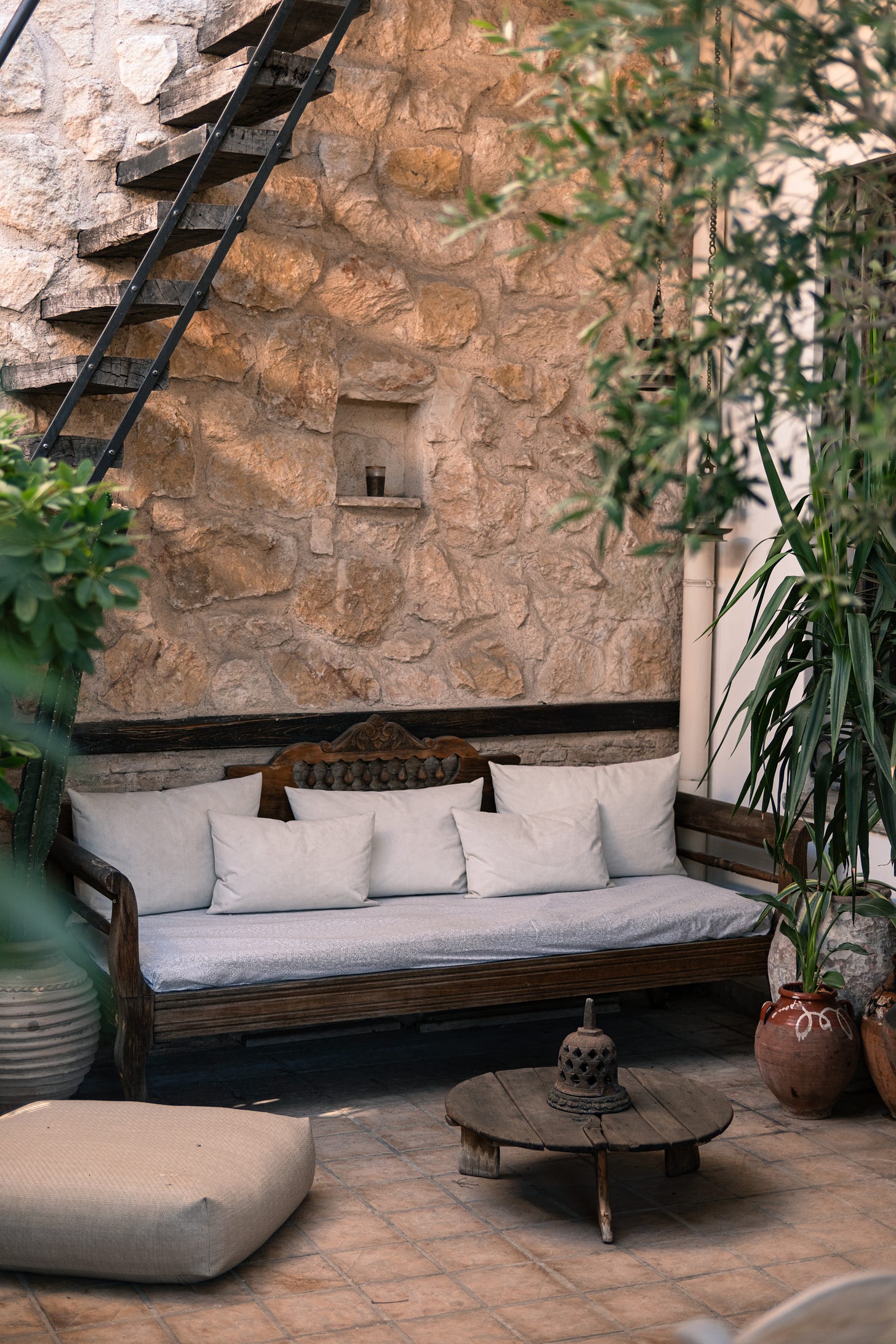This is a contemplative piece about all the roles in our practice that I do not talk about but I assume them, all the time.
1. Coordinating all the crafts
Topography, earthworks, architectural concept, permitting, foundation, carpentry, plumbing, electricals, interior and exterior finishes, joinery, roofing, landscaping - are just some of the disciplines I have to integrate from the start of the project until the moment you move in.
A good architectural concept provides clear directions early on for all disciplines and future subcontractors so that the building process, including eventual details, is as smooth as possible.
Obviously, no design is flawless, so I try to be there for every building phase in case a detail needs some polishing or clarification.
2. Creating clarity
Translating the essence of your dreams into a building form you can grasp and approve with confidence is key.
Through simple (hand) drawings and 3D walkthroughs, I have all the tools to present the core of the concept, while I explain how life will unfold, from everyday chores to birthday barbeques and Christmas parties.
I only ask two things: patience and endurance in making all the hundreds of decisions you need to for a successful project.
3. Responsibility (thinking long term)
The dimension of time is probably the hardest to grasp. More precisely, the concept of low time preference influencing our willingness to think extremely long-term when deciding what type of buildings to invest our hard-earned money in.
Today, square footage is the determining factor for real estate, stalling and eroding quality. Relentless cost-efficiency optimization has gotten us to a point where we build buildings that quickly get us into maintenance and energy-hell.
Short term thinking is keeping us in an endless cycle of building, demolition and rebuilding.
A 500 year old building is ten times more sustainable than one that will only stand for 50.
We, architects have the greatest responsibility today, to think and convince You to think as long term as possible with the investment you are going to make.
I have to think about how a certain project fits into the context so it is functionally resilient and flexible enough to serve You and others after you. And I have to make sure it is physically durable and low-maintenance enough so it does not end on the landfill soon (preferably never).
4. Exercise restraint (compromise)
Most projects start at the end of a very long period of contemplation, dream-stitching, whispering in the dark about personal details and decades of cash hoarding.
The dream, alas, becomes monumental, borderline unfeasible.
My job in this part, usually at the beginning of the design stage, is listening carefully, threading the needle between all the details that go head to head.
We contour the project along the border of feasibility and fragile dreams, because after all, we have to build something in real-life 4D.
I put great emphasis on creating the first, most essential concept and give You the opportunity to add more to it. This way the design process remains interactive and iterative, where You remain involved throughout.
We keep a dialogue about all the compromises that have to be made for the project to get off the ground, but also to remain anchored within achievable limits.
5. Help everyone keep calm
Architectural design and construction really entails gathering an orchestra of people from all walks and trades of life for one project that fulfills an often lifelong dream of a client.
This means debates often reach boiling point about details, people miscommunicate tasks and requests because they lack the language pack installed of the person who has to receive the info.
And really the only one who has a grasp and oversight of everything that’s happening is the architect of the project.
They’re the one who know what the original vision of the owner was and who translated it into a (buildable) concept.
I have a rule to not fall in love with my own concepts until people start moving in. This way I can keep a cool head and calm everyone down when a tough decision or a gentle kick in the butt is needed so things can literally fall into the right places.
6. Doing the truly invisible work
Our best work in architecture is unperceivable.
A well-designed kitchen layout that has every detail, drawer, equipment in the best place. A perfectly positioned window that has both a great view, intimacy and sunlight.
A dining space that is the center of family life but it’s not in the way otherwise. A bathroom that flows perfectly in the morning rush.
An outdoor kitchen that feels like an organic extension of the house and also blends with the garden.
All these elements (patterns), if well designed, take a step back, become the stage, the seamless backdrop for your life. Contemporary architecture all too often forces upon us design solutions that scream ideology or design form without a meaningful function or durable aesthetic.
Maestry is letting all this go and doing something essential that fits you, your family, it simply serves and does not remind you of itself every day with an elbow hit like a type two narcissist.
7. Spiritual guide
It’s The home, not just A home, your lifelong dream, The sanctuary, the family nest or an investment project is a serious feat, always. A big accomplishment, if successful, transcends us, both you and me.
We sculpt spaces that shape our everyday lives, our mood, our relationships even (the more successful dinner parties, the better) and our financials for a veeery long time.
Yet there will be moments when you will question if you were born to suffer through the worst building project on Earth (everybody does). And after moving in you will feel reborn - either in Heaven or Hell - the driveway will be paved with cobblestones either way if I am involved.
In these moments, I become your guide that lifts the spirits through the grit of construction.
Along all these years I learned to love the people involved, the process of birth that comes with creating a new haven for life.
Because everything I design and eventually gets built, is for You, for your enjoyment, for other people, who express themselves through our work - here lies the art, not in the obscene self-expression of abstract form, but in the service of life through architecture.
This writing was quite a stream of consciousness, I hope you liked it! Let me know what other roles you can think of architects that are not talked about!




